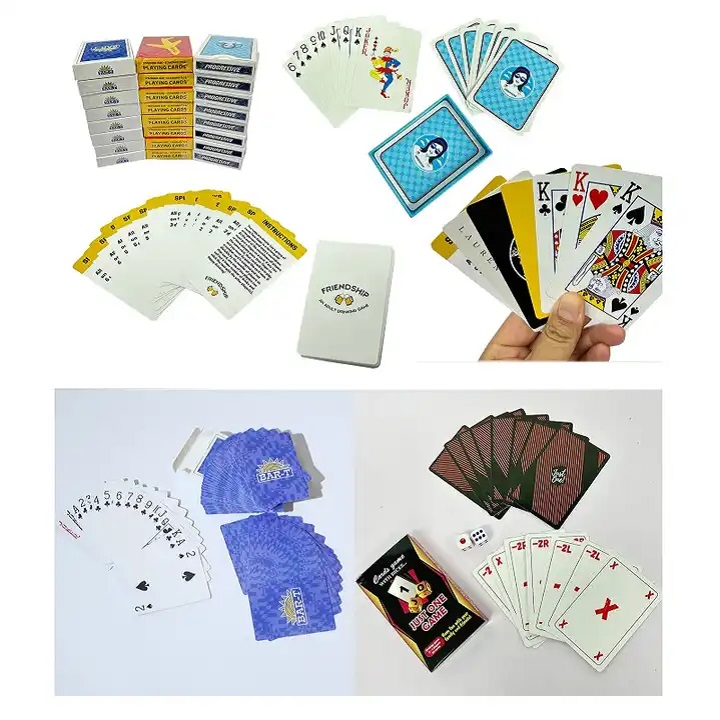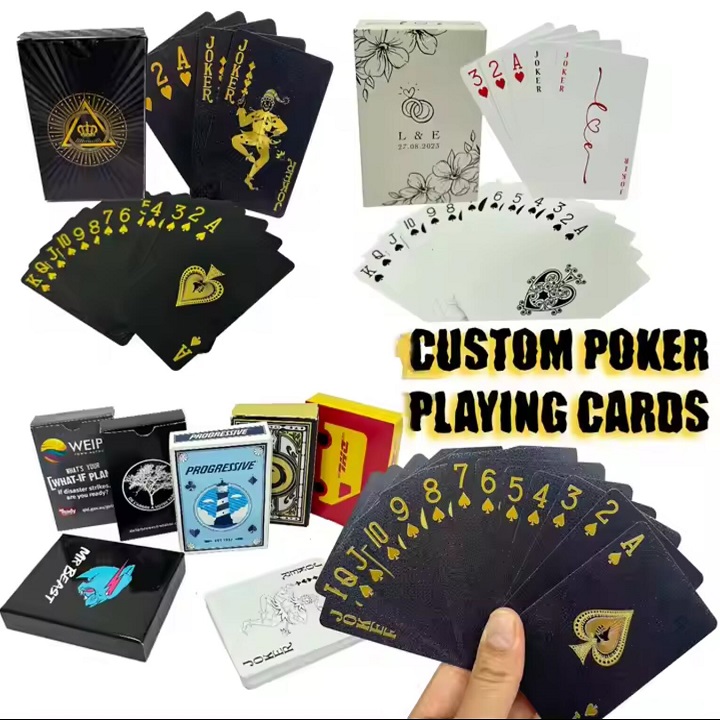Content Menu
● Historical Evolution of Playing Cards Design
● Contemporary Trends in Playing Cards Design
● Designing an Ace Deck of Playing Cards
>> Step-by-Step Guide to Designing Your Own Playing Cards
>> Designing with Rotated Symmetry
● Top Playing Card Designers
● Platforms for Design Inspiration
● Cardistry and Flourishing
● Conclusion
● Frequently Asked Questions
>> 1. Q: What are some common themes in modern playing card designs?
>> 2. Q: Who are some notable playing card designers?
>> 3. Q: What platforms can I use for playing card design inspiration?
>> 4. Q: How has technology influenced playing card design?
>> 5. Q: What are some tips for designing a unique deck of playing cards?
>> 6. Q: How do I ensure my playing cards are recognizable when fanned?
>> 7. Q: What software is best for designing playing cards?
Playing cards have been a staple of entertainment for centuries, evolving from simple, hand-painted designs to intricate, artistic masterpieces. The design of playing cards is a delicate balance between tradition and innovation, catering to both the practical needs of players and the creative expressions of designers. This article explores the captivating world of playing cards design, highlighting historical developments, contemporary trends, and the creative processes involved.
Historical Evolution of Playing Cards Design
Historically, playing cards were first introduced in Europe in the 14th century, with designs heavily influenced by the available printing technology. As technology advanced, so did the designs. In the 19th century, manufacturers began modernizing card designs, incorporating new techniques like letterpress and introducing decorative elements such as scrollwork and patterning on court cards.
In the early 19th century, De la Rue and Reynolds were among the first to modernize court card designs, setting the stage for future innovations.
Contemporary Trends in Playing Cards Design
Today, playing card designs are more diverse than ever, reflecting a wide range of themes and styles. From pop culture-inspired decks featuring characters from *Star Wars* and *Game of Thrones* to minimalist and monochromatic designs, there's something for every taste.
These creative designs not only appeal to fans of specific franchises but also serve as a canvas for artistic expression. Additionally, materials like upcycled subway cards and bulletproof Kevlar have been used to create unique decks.
Designing an Ace Deck of Playing Cards
Designing a compelling deck of playing cards involves several key considerations:
1. Inspiration Gathering: Look to various sources for inspiration, whether it's nature, art, or pop culture.
2. Standards: Ensure that the numbers and suit symbols are clear and consistent, even if you choose to deviate from traditional colors.
3. Customization: Add unique elements that reflect your theme or brand without compromising usability.

Step-by-Step Guide to Designing Your Own Playing Cards
1. Plan Your Design: Decide on a theme and sketch out ideas for the front and back of the cards. Consider what images, colors, and text you want to include.
2. Select Materials: Choose high-quality cardstock for durability. Look for cardstock that is thick enough for repeated handling but thin enough to shuffle easily (A good range can be 300 - 350 GSM).
3. Design Using Software: Use tools like Adobe Illustrator or Canva to create your designs. Ensure your designs are set to the correct dimensions, typically poker size (2.5 x 3.5 inches).
4. Print the Cards: Print a test sheet to check colors, alignment, and design quality. Adjust as necessary. Use a high-quality printer for the final prints or consider a professional printing service for the best results.
5. Cut the Cards: Carefully cut out each card using a paper cutter or craft knife and ruler for precise edges. Make sure all the cards are uniform in size for a consistent deck.
6. Add Finishing Touches: Consider laminating your cards for added durability and a professional feel. If you want a more tactile finish, consider using a spray or paint-on varnish.
7. Personalize Further: Add unique touches like signatures, embossing, or stamps to personalize your cards even more. Package your cards in a custom box or band to complete the presentation.

Designing with Rotated Symmetry
One of the more challenging and fun aspects of playing card design is creating rotated symmetry. This elevates a deck beyond a simple gallery of art into something more thoughtful and playing card-like; there is no upside-down and no wrong way to hold the card.
Top Playing Card Designers
Several designers have made significant contributions to the world of playing cards, pushing the boundaries of creativity and innovation:
Randy Butterfield: Known for his versatility and unique style, Randy has produced a wide range of themed decks.
Paul Carpenter: Famous for his luminescent design in the Tendril deck, which set a record for funding on Kickstarter.
Alexander Chin: A visual communications professional who brings expertise in illustration and design, winning multiple awards for his work.
Platforms for Design Inspiration
For those looking to create their own playing card designs, XingKun offers access to professional designers and a large collection of design examples to inspire creativity.
Cardistry and Flourishing
Cardistry, the art of manipulating cards, has influenced playing card design, particularly in terms of aesthetics and functionality. Decks designed for cardistry often feature geometric patterns or lavish colors that enhance visual appeal during spins and twirls.
Conclusion
The design of playing cards is a vibrant and evolving field, blending tradition with innovation. From historical developments to contemporary trends and creative processes, playing cards continue to captivate audiences worldwide. Whether you're a seasoned collector or an aspiring designer, the world of playing cards offers endless possibilities for artistic expression.
Frequently Asked Questions
1. Q: What are some common themes in modern playing card designs?
A: Modern designs often include pop culture themes, minimalist styles, and unique materials like upcycled materials or Kevlar.
2. Q: Who are some notable playing card designers?
A: Notable designers include Randy Butterfield, Paul Carpenter, and Alexander Chin, known for their innovative and award-winning designs.
3. Q: What platforms can I use for playing card design inspiration?
A: Behance and 99Designs are excellent resources for inspiration and professional design services.
4. Q: How has technology influenced playing card design?
A: Advances in printing technology have allowed for more intricate designs and the use of various materials, enhancing both aesthetics and durability.
5. Q: What are some tips for designing a unique deck of playing cards?
A: Gather inspiration, maintain design standards, and add unique elements that reflect your theme without compromising usability.
6. Q: How do I ensure my playing cards are recognizable when fanned?
A: Ensure that key elements like numbers and suits are visible from the corner of the card, and consider rotated symmetry for better visibility.
7. Q: What software is best for designing playing cards?
A: Adobe Illustrator and Canva are popular choices for creating professional-looking playing card designs.































